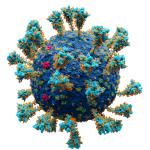I like sparkling water, you know, the water infused with carbon dioxide either naturally or, dread thought, artificially. Of course, I am of an age when I remember seltzer bottles delivered to your home, much like glass bottles of milk.
smallpox
Smallpox and rinderpest have been relegated to the dustbin of history. Thanks to vaccines and a massive, coordinated global effort, these two viruses have been wiped off the face of the Earth.
This article was originally published at Geopolitical Futures. The original is here.
By Rebecca Chisholm, University of Melbourne and
Oops, they did it again.









